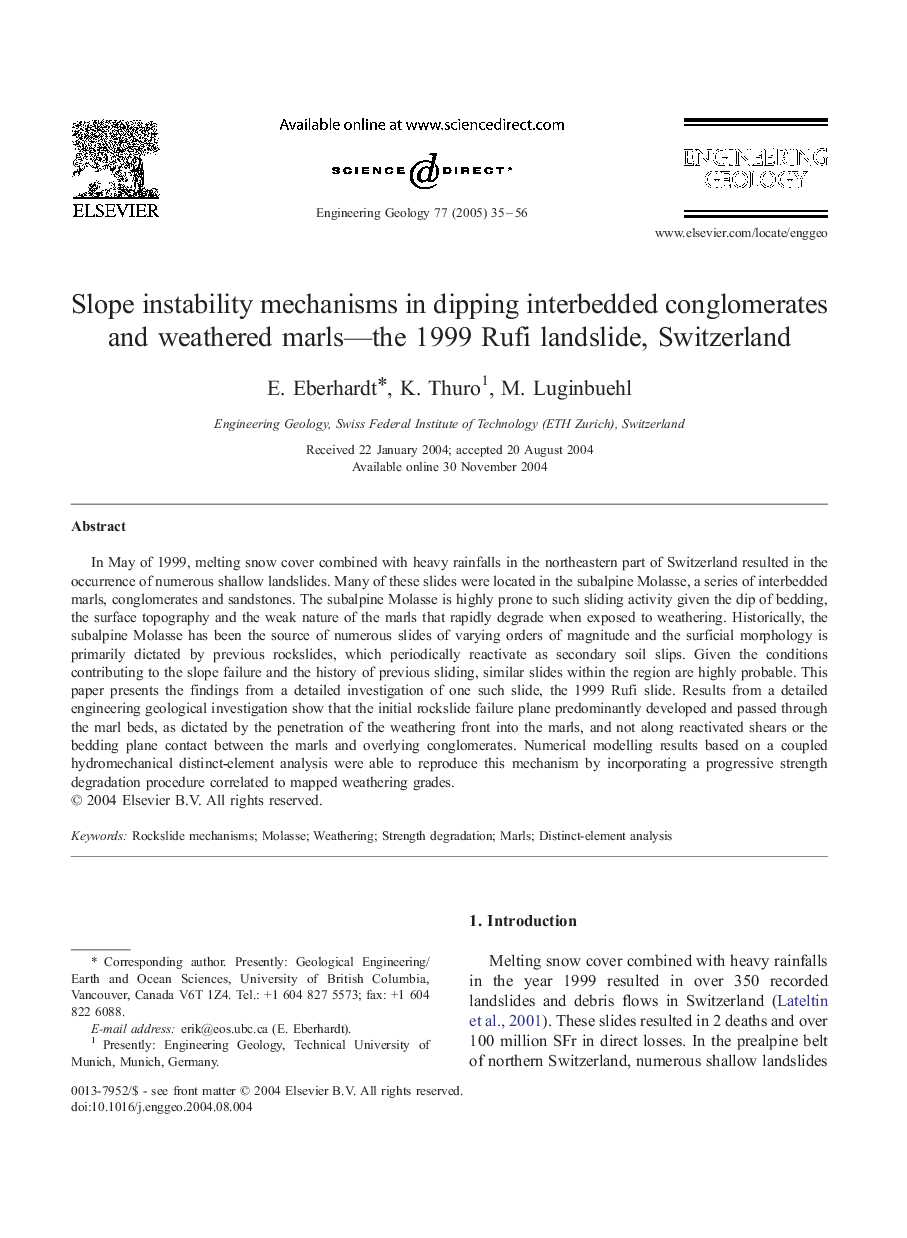| Article ID | Journal | Published Year | Pages | File Type |
|---|---|---|---|---|
| 9538099 | Engineering Geology | 2005 | 22 Pages |
Abstract
In May of 1999, melting snow cover combined with heavy rainfalls in the northeastern part of Switzerland resulted in the occurrence of numerous shallow landslides. Many of these slides were located in the subalpine Molasse, a series of interbedded marls, conglomerates and sandstones. The subalpine Molasse is highly prone to such sliding activity given the dip of bedding, the surface topography and the weak nature of the marls that rapidly degrade when exposed to weathering. Historically, the subalpine Molasse has been the source of numerous slides of varying orders of magnitude and the surficial morphology is primarily dictated by previous rockslides, which periodically reactivate as secondary soil slips. Given the conditions contributing to the slope failure and the history of previous sliding, similar slides within the region are highly probable. This paper presents the findings from a detailed investigation of one such slide, the 1999 Rufi slide. Results from a detailed engineering geological investigation show that the initial rockslide failure plane predominantly developed and passed through the marl beds, as dictated by the penetration of the weathering front into the marls, and not along reactivated shears or the bedding plane contact between the marls and overlying conglomerates. Numerical modelling results based on a coupled hydromechanical distinct-element analysis were able to reproduce this mechanism by incorporating a progressive strength degradation procedure correlated to mapped weathering grades.
Related Topics
Physical Sciences and Engineering
Earth and Planetary Sciences
Geotechnical Engineering and Engineering Geology
Authors
E. Eberhardt, K. Thuro, M. Luginbuehl,
